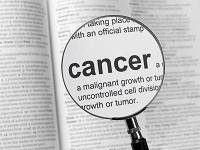Advertisment
Cancer mortality down 20 percent from 1991 peak

As of 2009, the overall death rate for cancer in the United States had declined 20 percent from its peak in 1991, translating to the avoidance of approximately 1.2 million deaths from cancer, 152,900 of these in 2009 alone. These figures come from the American Cancer Society’s annual Cancer Statistics report.
Each year, the American Cancer Society estimates the numbers of new cancer cases and deaths expected in the United States in the current year and compiles the most recent data on cancer incidence, mortality, and survival based on incidence data from the National Cancer Institute and the Centres for Disease Control and Prevention, and mortality data from the National Center for Health Statistics. The data are disseminated in two reports, Cancer Facts & Figures 2013 and its companion article, Cancer Statistics 2013.
The latest report finds that cancer death rates decreased from their peak of 215.1 per 100,000 in 1991 to 173.1 per 100,000 in 2009. Death rates continue to decline for all four major cancer sites: lung, colon and rectum (colorectal), breast, and prostate. Over the past two decades, death rates have decreased from their peak by more than 30% for cancers of the colorectal, female breast, and male lung, and by more than 40% for prostate cancer. These large drops are primarily due to reductions in smoking for lung cancer and to improvements in early detection and treatment for colorectal, breast, and prostate cancers.
The authors say as encouraging as those drops are, further progress can be accelerated by applying existing cancer control knowledge across all segments of the population, with an emphasis on those groups in the lowest socioeconomic bracket and other underserved populations.
According to the study, a total of 1,660,290 new cancer cases and 580,350 cancer deaths are projected to occur in the United States in 2013. Among men, cancers of the prostate, lung and bronchus, and colorectal will account for half of all newly diagnosed cancers; prostate cancer alone will account for 28% (238,590) of incident cases in men. Among women, the three most commonly diagnosed types of cancer in 2013 will be breast, lung and bronchus, and colorectal, accounting for about half of all cases. Breast cancer alone is expected to account for 29% (232,340) of all new cancer cases among women.
While incidence rates are declining for most cancer sites, they are increasing among both men and women for melanoma of the skin and cancers of the liver, thyroid, and pancreas. Overall cancer incidence rates decreased slightly in males (by 0.6% per year) and were stable in females in the most recent five year period for which there is data (2005-2009).
Cancers of the lung and bronchus, prostate, and colorectal in men and cancers of the lung and bronchus, breast, and colorectal in women continue to be the most common causes of cancer death. These four cancers account for almost half of the total cancer deaths among men and women. In 2013, lung cancer is expected to account for 26% of all female cancer deaths and 28% of all male cancer deaths.
Cancer death rates decreased by 1.8% per year in males and by 1.5% per year in females during the most recent five years of data (2005-2009). These declines have been consistent since 2001 and 2002 in men and women, respectively, and are larger in magnitude than those occurring in the previous decade. Between 1990/1991 and 2009, cancer death rates decreased by 24% in men, 16% in women, and 20% overall.
“In 2009, Americans had a 20% lower risk of death from cancer than they did in 1991, a milestone that shows we truly are creating more birthdays,” said John R. Seffrin, Ph.D., chief executive officer of the American Cancer Society. “But we must also recognize that not all demographic groups have benefitted equally from these gains, particularly those diagnosed with colorectal or breast cancer, where earlier detection and better treatments are credited for the improving trends. We can and must close this gap so that people are not punished for having the misfortune of being born poor and disadvantaged.”
Each year, Cancer Facts & Figures includes a special section, which in 2013 focuses on cancer of the pancreas. A lack progress in primary prevention, early diagnosis, and treatment of this cancer motivated the authors to address the disease in this year’s report. Pancreatic cancer is one of the deadliest cancer types. Most pancreatic cancer patients will die within the first year of diagnosis, and just 6% will survive five years. Over the past decade, pancreatic cancer death rates have been slowly increasing among US men and women, in contrast to the downward trend in rates for most other major cancer sites, such as lung, colorectal, female breast, and prostate. The special section provides updated information on the occurrence and treatment of pancreatic cancer to inform researchers, cancer control advocates, policy makers, and others, and to help focus attention on this fatal cancer.
REFERENCE: Siegel R, Naishadham D, Jemal A, Cancer Statistics 2013: CA Cancer Journal for Clinicians. doi: 10.3322/caac.21166.
For further information contact: David Sampson
david.sampson@cancer.org
American Cancer Society





